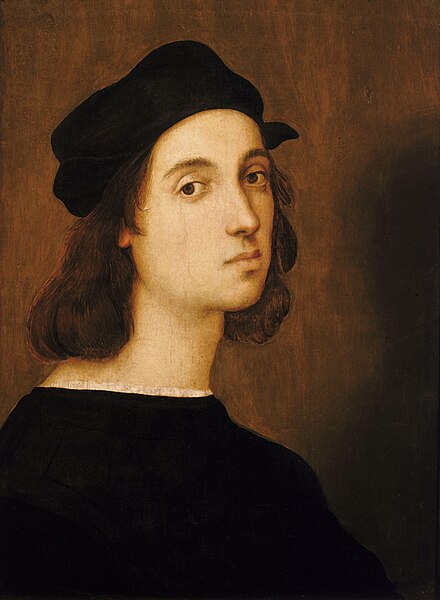The Vatican loggias are a corridor space in the Apostolic Palace, originally open to the elements on one side, which were decorated in fresco around 1519 by Raphael's large team of artists, with Giovanni da Udine the main hand involved. Because of the relative unimportance of the space, and a desire to copy the recently re-discovered Domus Aurea style of Ancient Roman painting, no large paintings were used, and the surfaces were mostly covered with grotesque designs on a white background, with paintings imitating sculptures in niches, and small figurative subjects in a revival of Ancient Roman style. This large array provided a repertoire of elements that were the basis for later artists creating grotesque decoration across Europe.
A view down the loggia
A section of ceiling with scenes from the life of David
Raffaello Sanzio da Urbino, now generally known in English as Raphael, was an Italian painter and architect of the High Renaissance. His work is admired for its clarity of form, ease of composition, and visual achievement of the Neoplatonic ideal of human grandeur. Together with Leonardo da Vinci and Michelangelo, he forms the traditional trinity of great masters of that period.
Presumed portrait of Raphael
Raphael, The School of Athens
Raphael, Cardinal and Theological Virtues, 1511
Giovanni Santi, Raphael's father; Christ supported by two angels, c. 1490






